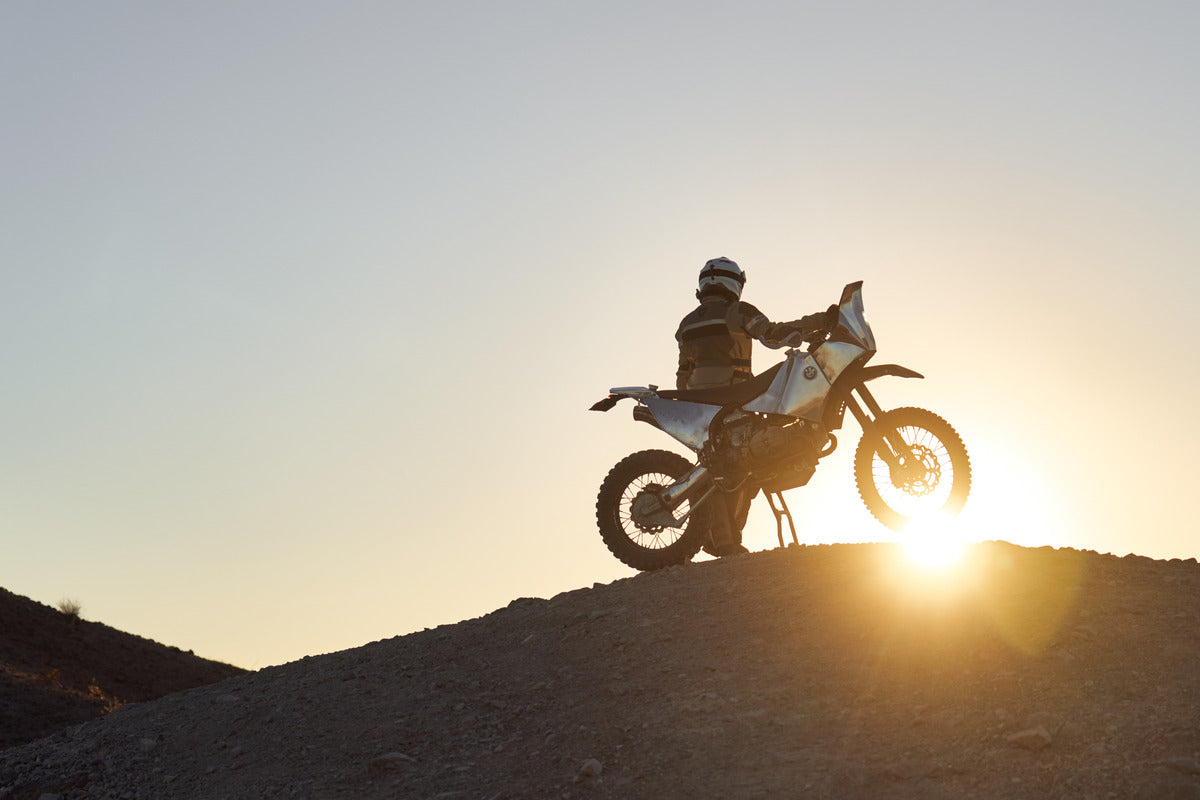
Conquer the Trails with Confidence
How to Prepare Yourself for an Off-Road Motorcycle Trip:
Off-road motorcycle trips aren’t just rides — they’re adventures into the wild, unpredictable, and thrilling corners of the world. Whether you’re navigating forest trails, sandy dunes, rocky riverbeds, or mountain passes, off-road riding demands more from both you and your machine than a typical tarmac tour.
So how do you get ready for it?
Let’s break down how to prepare yourself — physically, mentally, and mechanically — for an unforgettable off-road motorcycle trip.
1. Mindset First: Understand What Off-Road Really Means
Off-road riding isn’t just about handling your bike — it’s about adapting to terrain, reacting quickly, and staying mentally calm under pressure. Slippery mud, loose rocks, fallen branches — your route can change every minute. Stay Relaxed a tense body leads to fatigue and mistakes. Learn to ride loose, not rigid. Always remember It’s not about speed Off-roading is about control, technique, and stamina — not racing.
2. Train Your Body: Endurance Over Ego
Off-road riding is a full-body workout. You’ll stand on pegs for hours, steer with your legs, and battle balance constantly.
Start preparing at least a few weeks in advance:
- Leg and core strength: Squats, planks, lunges — they’ll help with stability and standing position.
- Cardio: Hiking, cycling, or running builds endurance.
- Flexibility: Stretching and yoga improve your control and reduce injury risk.
💡 Pro Tip: Practice riding while standing on the pegs — it’s the cornerstone of off-road technique.
3. Prep Your Motorcycle: Not All Bikes Are Born Trail-Ready
Adventure and dual-sport bikes are great off-road, but even they need a bit of tuning before hitting rough terrain.
Checklist for Your Bike:
- Off-road tires with adequate tread
- Crash guards and skid plates for protection
- Handguards to protect your levers and fingers
- Luggage setup — soft saddlebags are better than hard boxes off-road
- Suspension tuning for your weight and terrain
- Fresh fluids & chain maintenance
4. Gear Up Right: Protection is Power
You’ll fall. Everyone does. What matters is how well you’re protected when you do.
Essential Off-Road Riding Gear:
- Adventure helmet (with visor and good ventilation)
- Armored jacket & pants (abrasion + impact protection)
- Riding gloves with knuckle protection
- Off-road or ADV boots (ankle support is a must)
5. Route Planning: Know Before You Go
You’re not just looking for twisties — you’re looking for terrain. Make sure you Let someone know your route and estimated return — remote areas can have zero network.
6. Packing Light, Smart, and Secure
Weight is your enemy on the trail. Pack only what you need, and pack it low and tight. Essentials like hydration pack, Energy snacks, first – aid kit, power bank, tool kit and don’t forget spares gloves & socks if you’re going to face wet terrain.
7. Practice, Then Progress
Before hitting the trails on a multi-day trip, test yourself by Riding on dirt roads, gravel, or basic forest paths, Practice slow-speed turns, braking on loose surfaces, and small hill climbs, learn how to recover from a fall (lift your bike safely!)
Final Thought: Off-Roading Is a Skill, not a Sprint
Don’t try to be an enduro legend on day one. Learn the terrain, listen to your body, trust your bike, and embrace the mud, the mess, and the mayhem.
Because out there — beyond the paved roads — lies the real adventure. And once you experience it, there's no going back.


Leave a comment
This site is protected by hCaptcha and the hCaptcha Privacy Policy and Terms of Service apply.